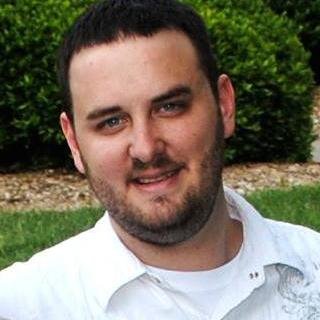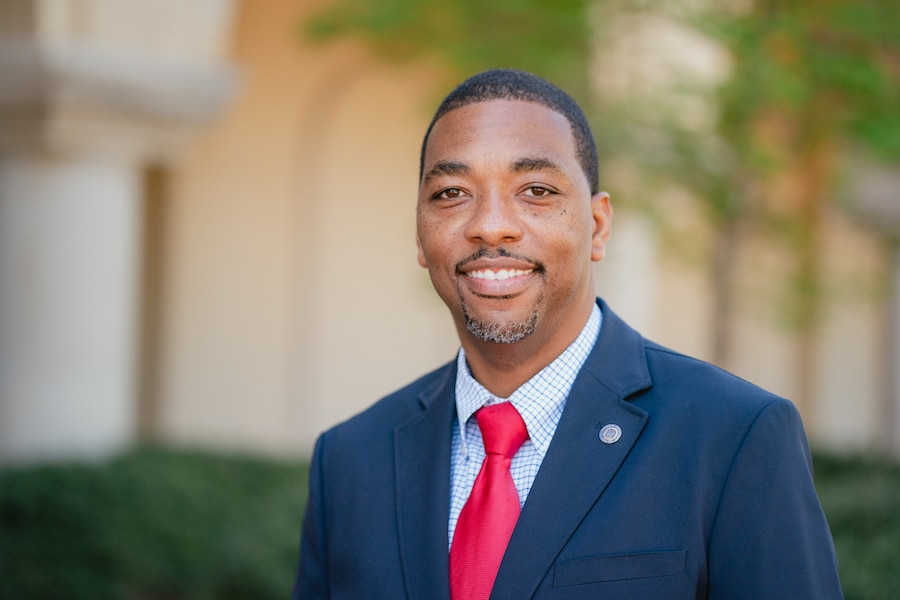FLOWER MOUND Despite recent novel attempts to recast Jesus as one who never claimed to be God, “people understood it in his day” that his response to the religious leaders meant he believed he was the incarnate Lord, former atheist and bestselling author Lee Strobel told a Flower Mound audience Oct. 6.
Strobel, a former legal affairs editor at the Chicago Tribune whose books include “The Case for Christ” and “The Case for Faith,” told those gathered at RockPointe Church the vital question following Jesus’ confession is, “Is there any evidence to back it up?”
Strobel was in the Dallas area Oct. 6 and 7, speaking at RockPointe and Prestonwood Baptist Church in Plano while promoting his newest book, “The Case for the Real Jesus.”
Strobel recounted how his wife became a Christian several years before he did, and he spent two years researching the claims of Scripture, finally concluding that the evidence weighed by procedures he learned at Yale Law School pointed to the biblical Christ.
Using alliteration, Strobel said the Jesus of Scripture is objectively attested to based on the historical fact of his execution, early accounts of his life, death and resurrection, the empty tomb, eyewitnesses, and the emergence of the early church.
EXECUTION
Strobel said that Jesus was crucified and declared dead is “one of the most solid facts of ancient history.”
While some have argued that perhaps Jesus had a fortuitous resuscitation to somehow survive his ordeal, history describes Roman flogging alone as often fatal, with one historian noting the veins and muscles “were laid bare.”
Strobel’s interview with an expert on Roman execution said Jesus would have been in critical condition in what is termed “hypovolemic shock,” with eventual death on the cross likely stemming from asphyxiation.
“Friends, Jesus was dead when he was taken down from the cross,” said Strobel, noting that at least five extra-biblical sources from antiquity?including Jewish historian Josephus and the Jewish Talmud?referred to his crucifixion as an historical event.
In recent times, even liberal scholar John Dominic Crossan of The Jesus Seminar doesn’t deny Jesus’ crucifixion.
EARLY ACCOUNTS
“When I began my investigation ? I didn’t accept Scripture to be the inspired Word of God,” said Strobel, noting he once believed the resurrection was legend that developed over time.
“But legend takes a long period of time to develop”?at least two generations according to a noted historian on Rome, A.N. Sherwin-White, Strobel said.
In 1 Corinthians 15:3-7, Strobel said Paul pens an early creed of the church recited in public worship?dating back “as early as two to three years after Jesus.”
Strobel said the otherwise inexplicable rise of the early church is consistent only with a risen Jesus who proved his deity to his earliest followers.
EMPTY TOMB
The Gospel accounts say Pilate released the body of Jesus for burial to Joseph of Arimathea, a wealthy member of the Sanhedrin and a follower of Jesus. The burial cave was sealed and under heavy guard, “only to be discovered empty by a band of women.”
Because a writer doesn’t invent things to hurt his own cause?a test of validity sometimes called the “criterion of embarrassment”?the biblical writers would not have included that women were the first ones to discover the empty grave unless it were true, Strobel explained.
In first-century Judaism, women were not considered reliable witnesses, so “the only explanation is that’s what happened,” Strobel argued.
The strongest evidence for the empty grave, however, is that “no one in the first century ever claimed the tomb was not empty,” Strobel said.
“The authorities said someone stole the body?. The Romans wanted Jesus dead; the Jews wanted Jesus to stay dead,” Strobel said, and Jesus’ followers were not going to “risk their lives for something they knew to be a lie.”
EYEWITNESSES
The New Testament reports Jesus appeared to 515 people after his resurrection, “to tough-minded people and tender-hearted people,” Strobel asserted. Paul’s statement in 1 Corinthians 15 is that he appeared to more than 500 believers at one time, many of whom remained alive at the time Paul penned the epistle.
Strobel said as a legal reporter he covered dozens of trials in which people were sentenced to death on a relatively short trail of evidence. Yet Paul boldly claimed Jesus’ post-resurrection appearance to more than 500 people?an overwhelming number of witnesses?plus the apostles, and lastly to Paul.
Some skeptics have offered that perhaps eyewitness accounts of the resurrected Jesus were simply hallucinations or groupthink produced by hyper-suggestion.
But people don’t ask their friends, “How did you like my dream last night?” Dreams are individual events, he argued.
Quoting a psychiatrist he interviewed, Stobel said: “For 515 people to have a hallucination at the same time, it would be a bigger miracle than the resurrection.”
If groupthink had produced a belief in the resurrection, Strobel said the unlikeliest of converts would have necessarily succumbed to such a phenomenon; Saul of Tarsus hated Christians and was advancing in Judaism, and James, the brother of Jesus, did not follow him during Jesus’ lifetime?a shameful thing for a rabbi in ancient Judaism.
EMERGENCE OF THE CHURCH
The emergence of the early church in the same city where Jesus was crucified is confounding if Jesus was not raised, said Strobel, noting the suggestion of some that Christianity grew up from legend.
Peter, cowardly in his betrayal of Christ during Jesus’ flogging, stood strong days later at Pentecost to remind the crowd that Jesus did miracles among them including his resurrection from the dead.
“[The crowd asked Peter], ‘What do we do?’ and the church exploded on the scene with 3,000 souls added that day, Strobel said.
“Suddenly the once cowardly men are men filled with courage.”
Strobel said the 9/11 terrorists died for what they hoped was true?that they would see Heaven for their martyrdom.
“People will die for what they are convinced is true, but not if they know their beliefs are false,” said Strobel, attempting to dispel the notion that Jesus’ followers may have invented a resurrection tale.
“They were there; they witnessed it!” Strobel said of the disciples. They did not simply believe it was true, “they knew it and were willing to die for it.”
During a question-and-answer session, Strobel explained how he spent two years examining Christianity as a skeptic before he came to a place where “I believed it based on data.”
“Now what?” he recounted asking himself.
“I realized it would take more faith to maintain my atheism” than to succumb to the prayers of his wife and the evidence before him.
Strobel said he remembered John 1:12?”But to all who did receive him, he gave them the right to be children of God, to those who believe in his name.”
“Believe” plus “receive” equals “become,” Strobel said, “and I received complete forgiveness through Jesus Christ.”
Strobel’s website?leestrobel.com?includes numerous print and multimedia apologetics resources.














